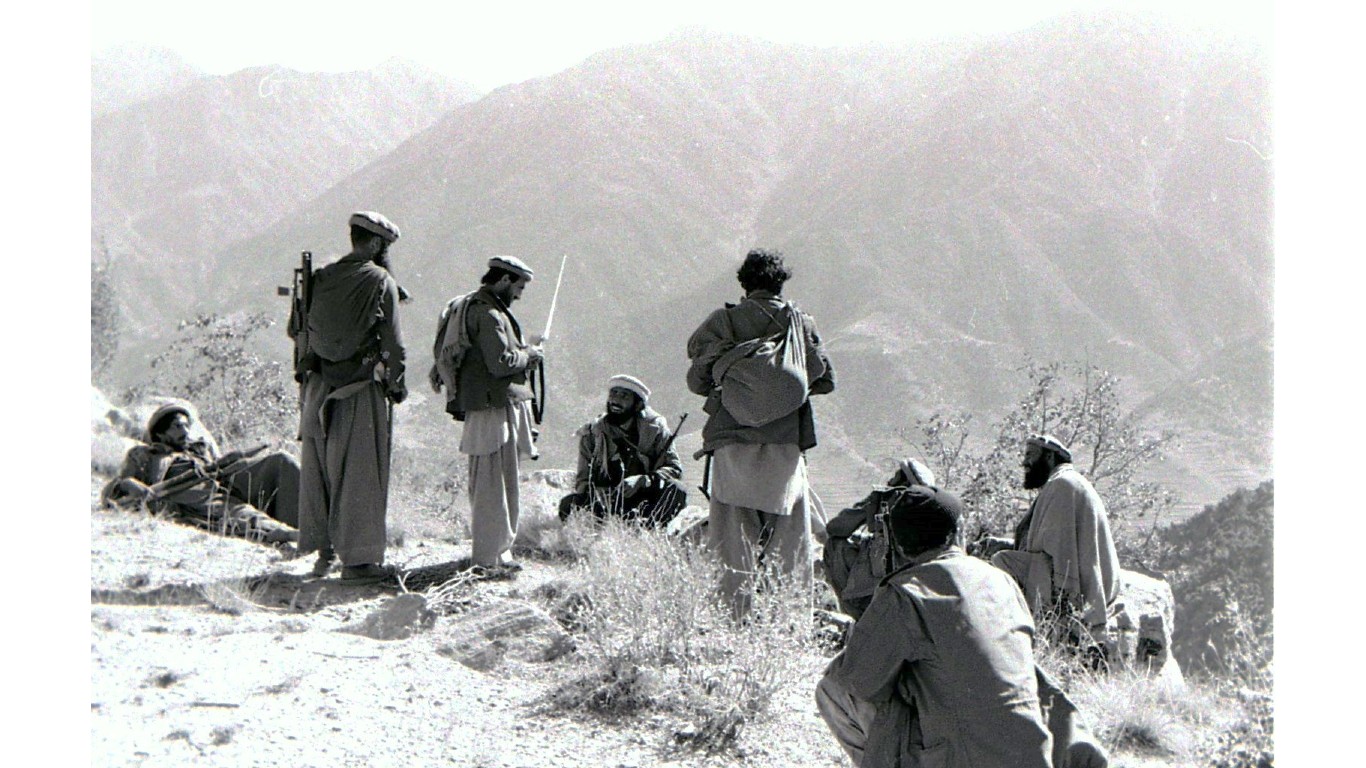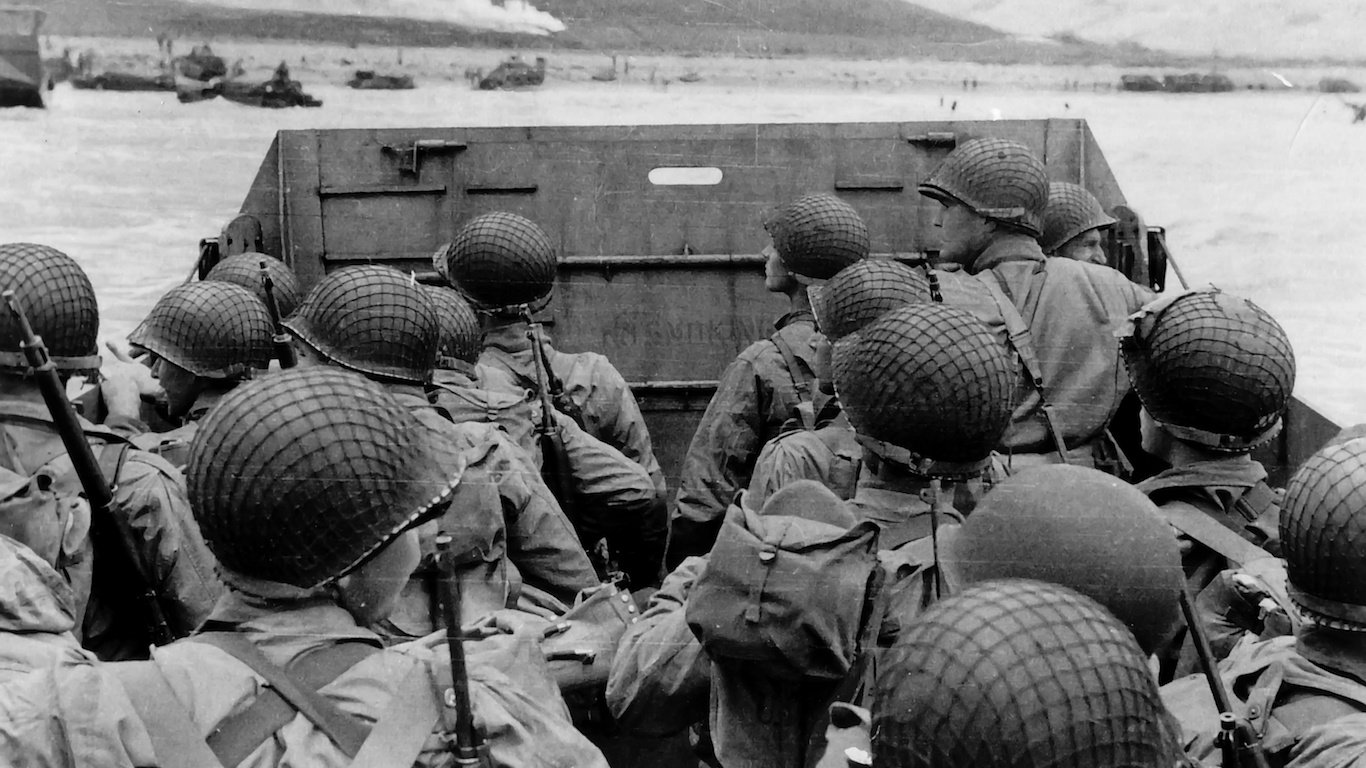

The Russian invasion of Ukraine has largely been a costly war of attrition with neither side making much progress. The war is the most recent ongoing invasion to rock the geopolitical scene, but it is certainly not the first. (While cities in Ukraine are being bombed, see cities destroyed by the U.S. in World War II.)
Going back thousands of years, countries and tribes have invaded other territories, whether to capture people and resources in a foreign land or to liberate previously-owned and lost land. One example of this type of military offensive is Gengis Khan’s invasion of Central Asia, which resulted in the Mongol Empire stretching across a majority of the continent. More recent invasions have also shifted the geopolitical landscape and impacted the modern world we know today.
To identify the most famous invasions of the past one hundred years, 24/7 Wall St. reviewed various historical and military sources. The invasions and military incursions are listed in chronological order.
Perhaps one of the most significant invasions in history is D-Day, which took place on June 6, 1944. Led by the Allied forces aiming to liberate Europe from German forces, the meticulously planned D-Day invasion marked the turning point in the European Theater in World War II. Despite the enormous risks and heavy casualties, tens of thousands of American, British, and Canadian troops successfully established a Western front against the Nazis, putting significant pressure on German forces. Ultimately, D-Day laid the groundwork for the eventual Allied victory in Europe. (Several memorials and cemeteries have been erected to commemorate those who lost their lives in the invasion. See the oldest U.S. war monuments overseas and who they honor.)
Another major invasion from the WWII era was Operation Barbarossa, which was launched on June 22, 1941. This invasion by Axis powers was in direct violation of the Non-Aggression Pact between the Soviet Union Premier Joseph Stalin and Nazi Germany’s leader Adolf Hitler, and its aim was to eliminate the Soviet Union from the war. This was the largest invasion in the history of warfare, using roughly 3 million soldiers. Despite early gains, however, the operation ultimately failed.
Operation Barbarossa’s failure was similar to that of Napoleon, who more than a century ago attempted to invade Russia but was stalled by the harsh Russian winter. The failed Nazi invasion and overextension of Axis troops would contribute to Germany’s eventual fall.
A majority of the invasions on the list were during major global conflicts. The Vietnam War, WWII, the War on Terror, and the current Russia-Ukraine war. Also, most of the countries represented on this list, in one way or another, are host to some of the stronger military forces on the planet.
Here is a look at the most famous invasions of the last century.

German Invasion of Poland
> Year: 1939
> Invading forces: Germany, Slovakia, Soviet Union
> Defending forces: Poland
Nazi Germany’s unexpected assault on Poland on Sept. 1 1939 marked the beginning of WWII. German battalions launched the unanticipated offensive on Poland as northern forces sprung from Pomerania and East Prussia, while the southern contingents penetrated the south of Poland from Silesia and Slovakia. The Red Army of the Soviet Union moved in from the east on Sept. 17, and Poland was then partitioned between the Nazis and the Soviets according to the Nonaggression Pact signed by the two forces ahead of the invasion.
[in-text-ad]
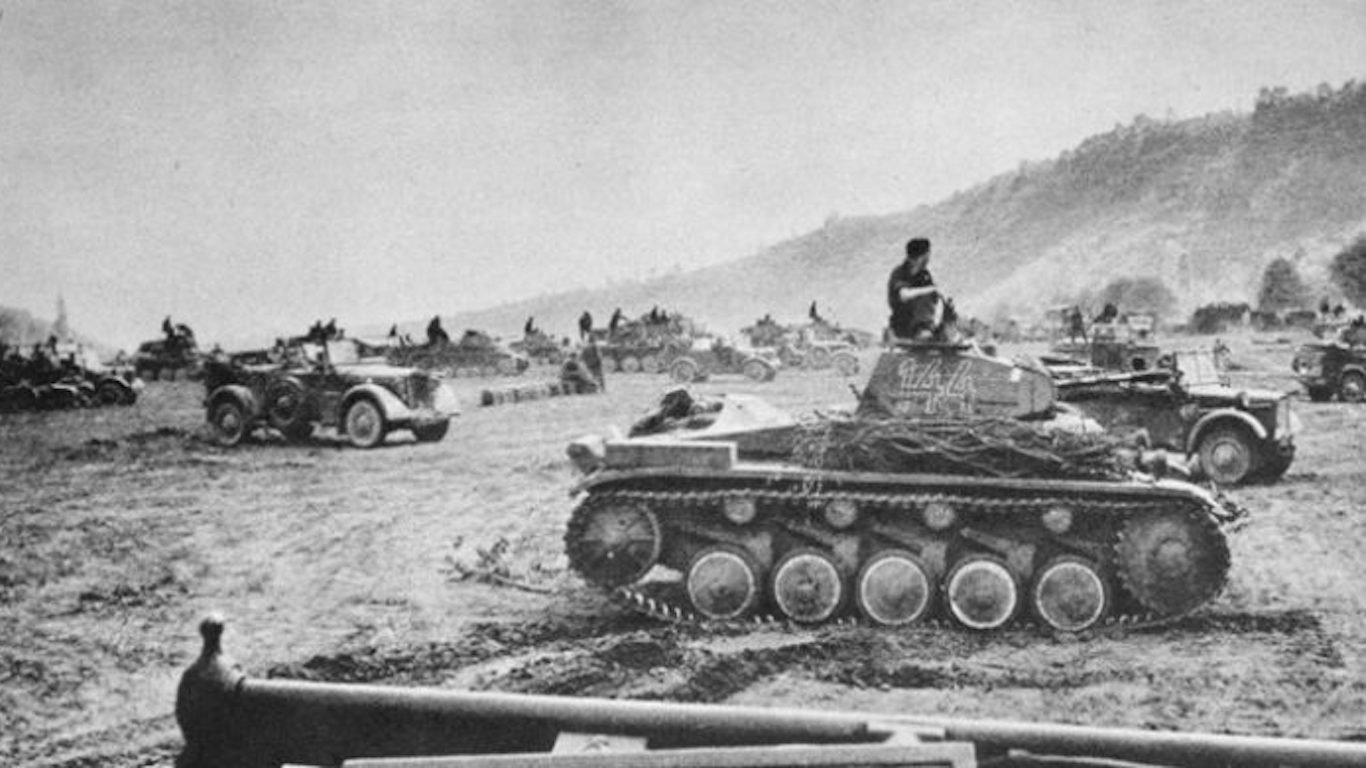
German Invasion of Western Europe
> Year: 1940
> Invading forces: Germany, Italy
> Defending forces: Netherlands, Belgium, France
In May 1940, Germany launched an invasion of the Low Countries — Belgium, the Netherlands, and Luxembourg — and France, bypassing central Belgium and instead using the Ardennes Forest route. Overcoming French defenses swiftly, the Germans reached the coast, leading to Belgian and Dutch capitulation. A large-scale evacuation of British and French troops from Dunkirk ensued. Paris fell in June, and a subsequent armistice resulted in German occupation of northern France and the Atlantic coastline, with a new French government established in Vichy.
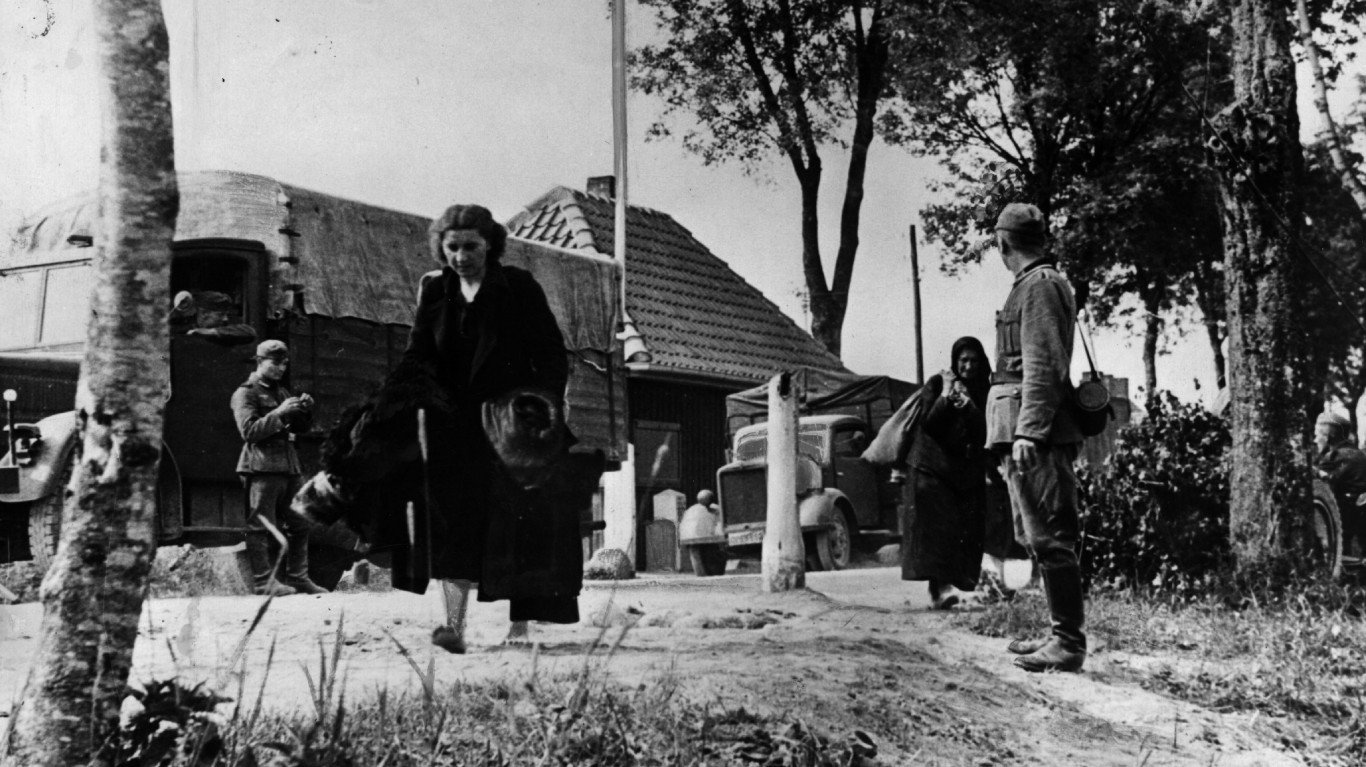
Operation Barbarossa
> Year: 1941
> Invading forces: Germany, Italy
> Defending forces: Soviet Union
Operation Barbarossa, launched on June 22, 1941, was Nazi Germany’s ambitious strategy to invade the Soviet Union, violating the Nonaggression Pact of 1939. Unleashing roughly 3 million troops, it is historically the largest military offensive. However, the rigorous Russian winter and staunch Soviet resistance foiled Nazi ambitions, making Operation Barbarossa a catastrophic failure that drastically reversed Germany’s fortunes in the war.
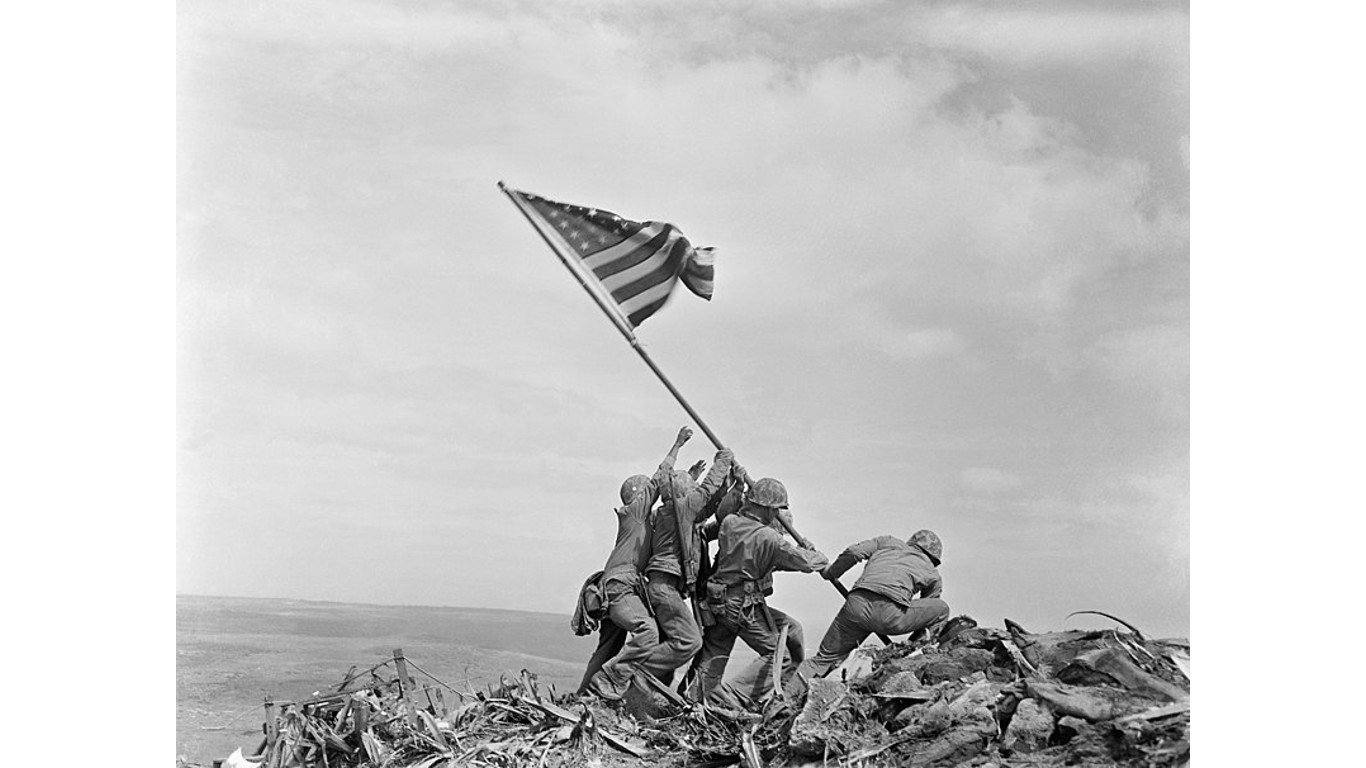
Invasion of occupied Asia
> Year: 1942
> Invading forces: United States, Soviet Union, Vietnam, United Kingdom
> Defending forces: Japan
In August 1942, the U.S. performed its first major amphibious assault of WWII at Guadalcanal, capturing a strategic airfield. This led to intense battles as both sides sought control of Henderson Field. By March 1943, American forces, after a fierce struggle, successfully took over the island, marking a significant step in repelling the Japanese in the Pacific. This victory laid the groundwork for the island hopping strategy, bypassing heavily fortified islands for more vulnerable locations, accelerating the Allied invasion across the Pacific.
[in-text-ad-2]
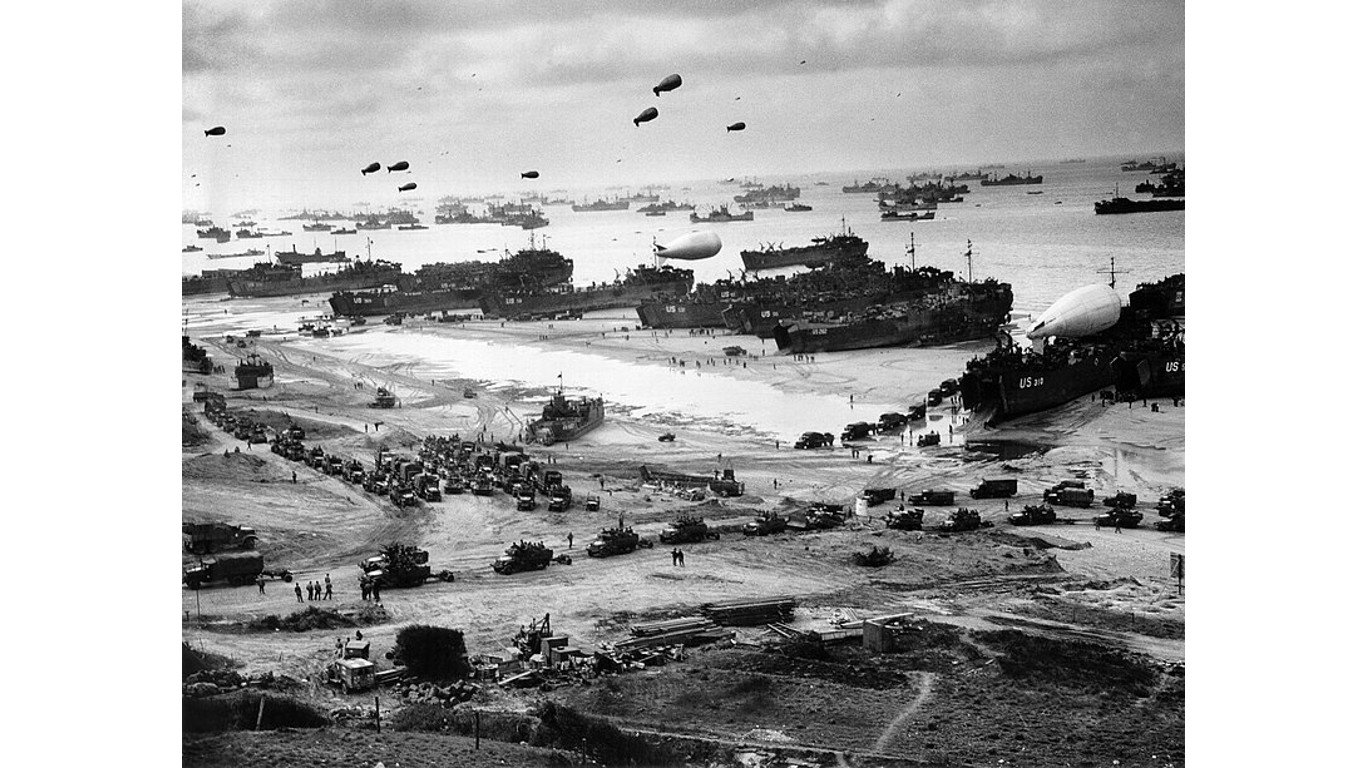
Operation Overlord
> Year: 1944
> Invading forces: United States, United Kingdom, France, Canada, Poland
> Defending forces: Germany, Italy
D-Day, on June 6, 1944, kicked off this operation to invade and liberate the European mainland from the Nazi Germany. Allied Forces deployed in Northwestern France and secured a foothold in Normandy. This invading force comprised roughly 200,000 soldiers and is considered the largest amphibious invasion in history. This operation marks the key turning point in the Western Theater, when the Allied Forces were able to push back the Axis Powers and eventually prevail in the war, even at great cost.

French Indochina War
> Year: 1945
> Invading forces: France, United Kingdom
> Defending forces: Vietnam, Laos, Cambodia
Following Japan’s withdrawal from Vietnam, Nationalist leader Hồ Chí Minh proclaimed its independence. France refused to recognize it, launching a military invasion to regain control of the country and to reestablish its colonial authority, setting off the French Indochina War. The first few years of this war were characterized by low-level rural insurgency against the French occupation. Tensions escalated in 1946, when French naval forces bombarded Haiphong, killing thousands of civilians. This later culminated in the Geneva Accords of 1954, dividing Vietnam into North and South — marking the end of French colonial influence, but sowing the seeds for the Vietnam War.
[in-text-ad]
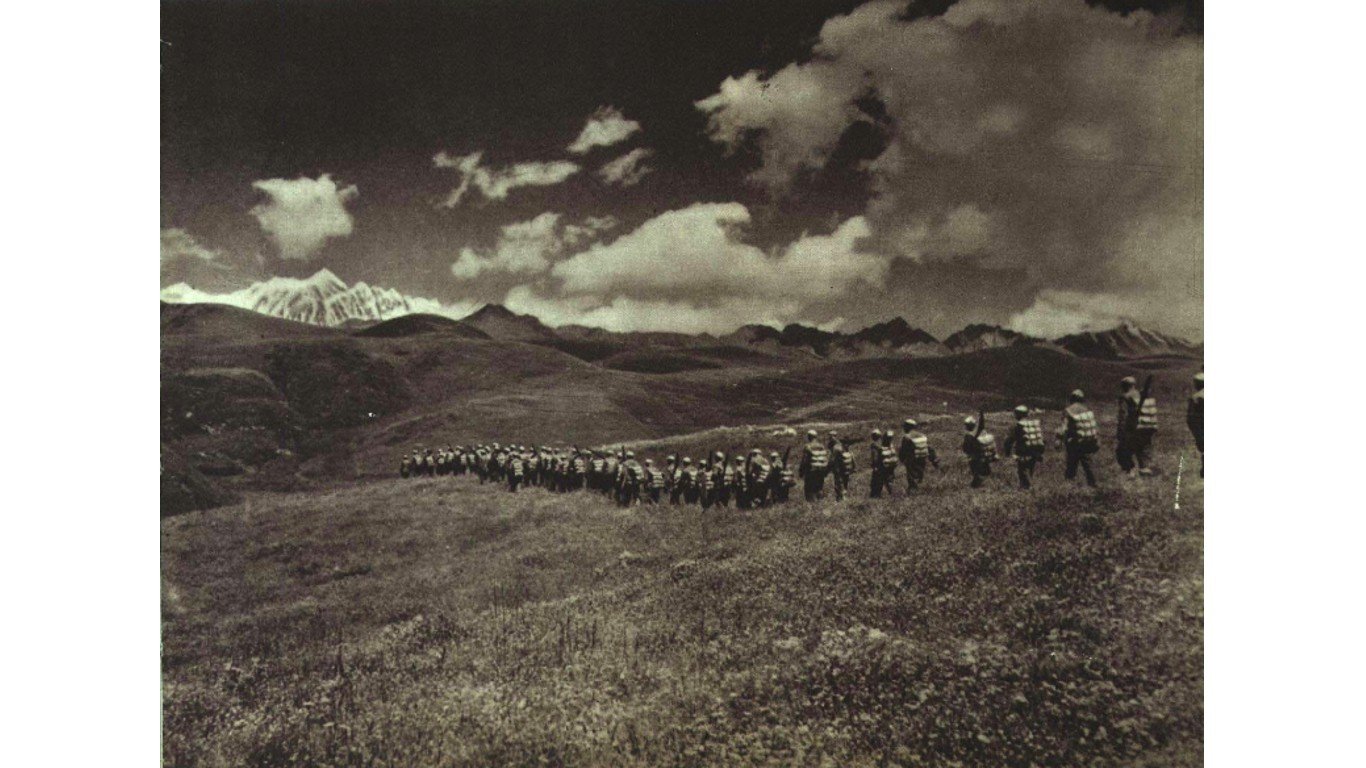
Invasion of Tibet
> Year: 1950
> Invading forces: China
> Defending forces: Tibet
In 1950, Chinese troops seized control of eastern Tibet, quashing the under-resourced Tibetan forces. The international community did not intervene despite the Dalai Lama’s appeals. A coerced treaty in 1951 enabled Chinese civil and military establishments in Lhasa, promising Tibetan autonomy and religious freedom. However, by 1959, resistance to Chinese oppression had escalated into a major uprising in Lhasa, which was ultimately unsuccessful, leading to the Dalai Lama’s escape through the Himalayas to India. This mountain nation is still under Chinese rule to this date.
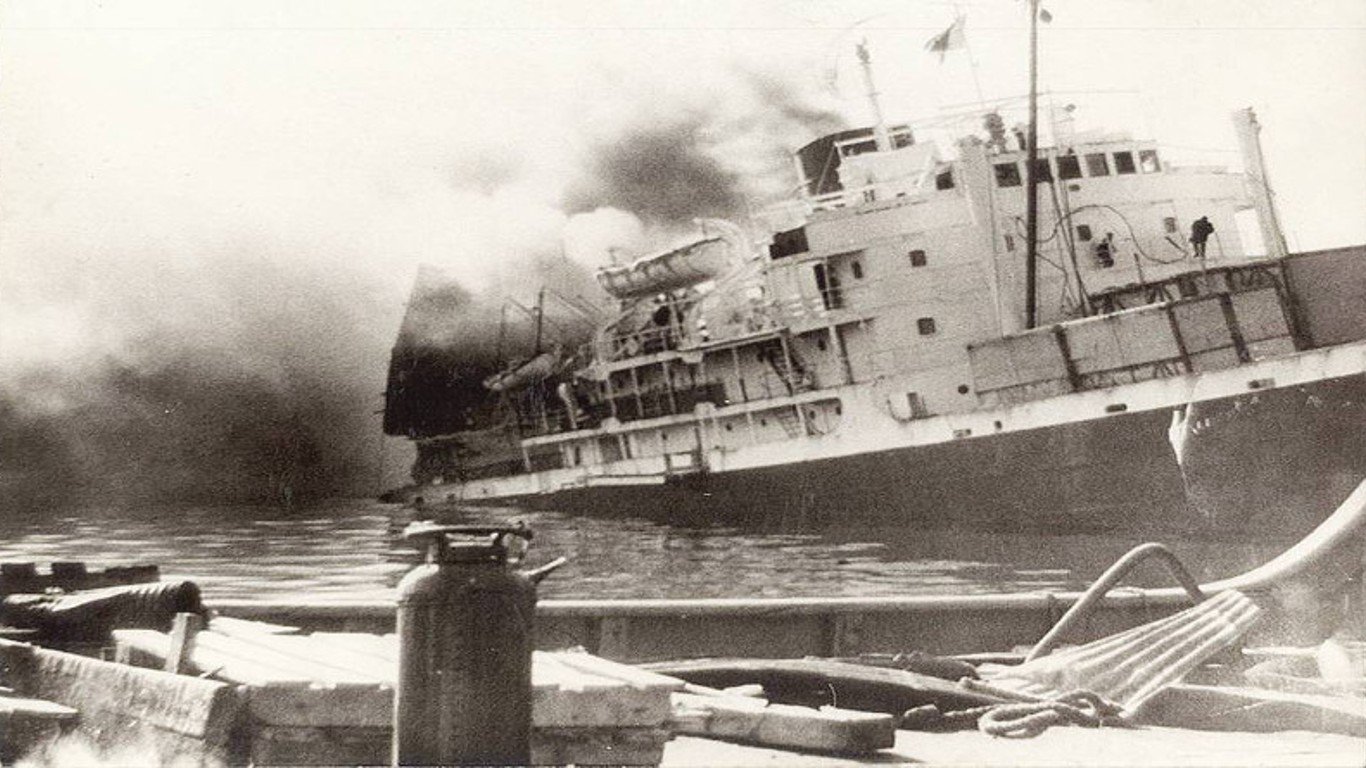
Bay of Pigs
> Year: 1961
> Invading forces: United States
> Defending forces: Cuba
The Bay of Pigs invasion of Cuba in 1961 was a failed attempt by CIA-trained Cuban exiles to overthrow Fidel Castro’s government. U.S. President John F. Kennedy withdrew vital air support at the eleventh hour to maintain America’s deniability, leaving the ill-prepared rebels exposed. The invasion was swiftly crushed by Castro’s forces within 72 hours, bolstering Castro’s position and severely damaging U.S.-Cuba relations.
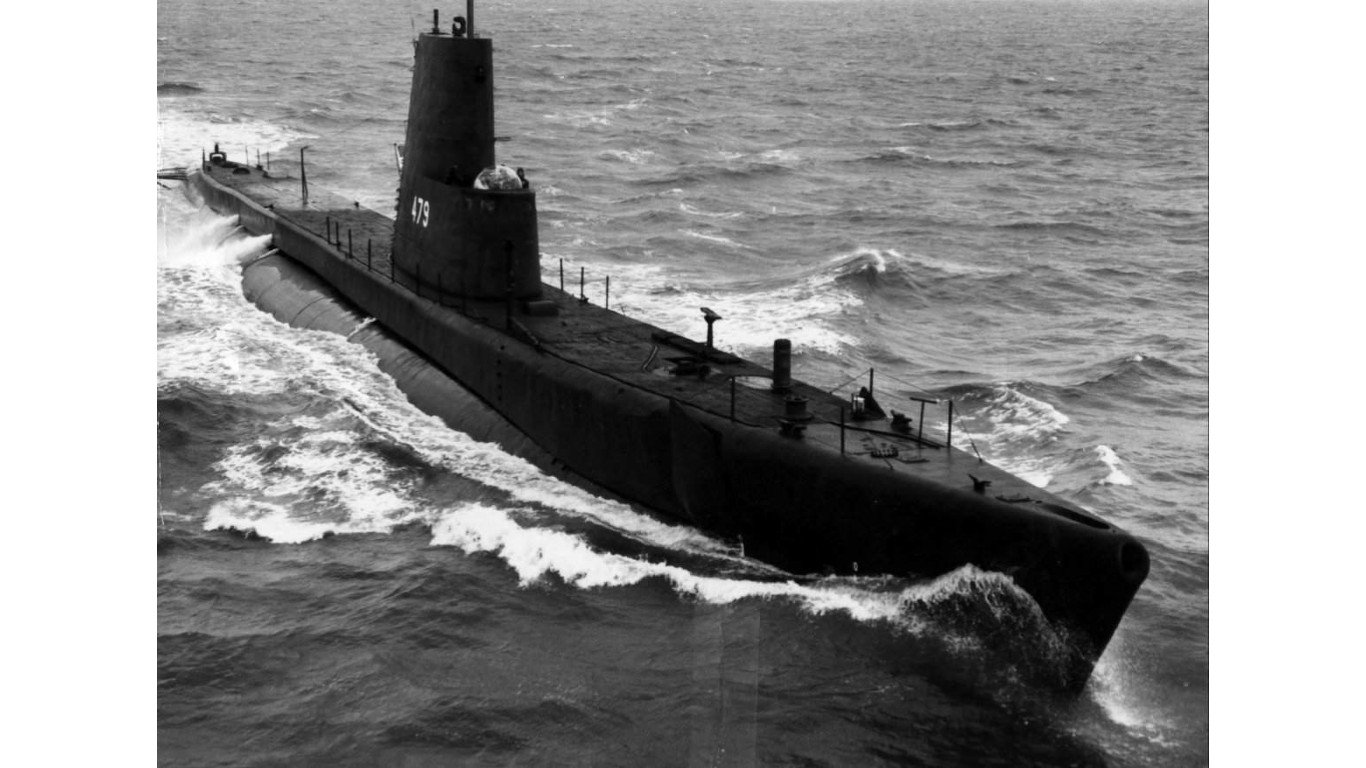
Indo-Pakistani War
> Year: 1965
> Invading forces: Pakistan
> Defending forces: India
The 1965 India-Pakistan War marked the second major conflict over the contested region of Jammu and Kashmir. The escalation began when Pakistani forces attempted an unsuccessful seizure of the territory, resulting in intensified hostilities. The conflict, however, reached a stalemate, leaving the issue of Kashmir’s status unresolved, with lasting implications for the region’s dynamics.
[in-text-ad-2]
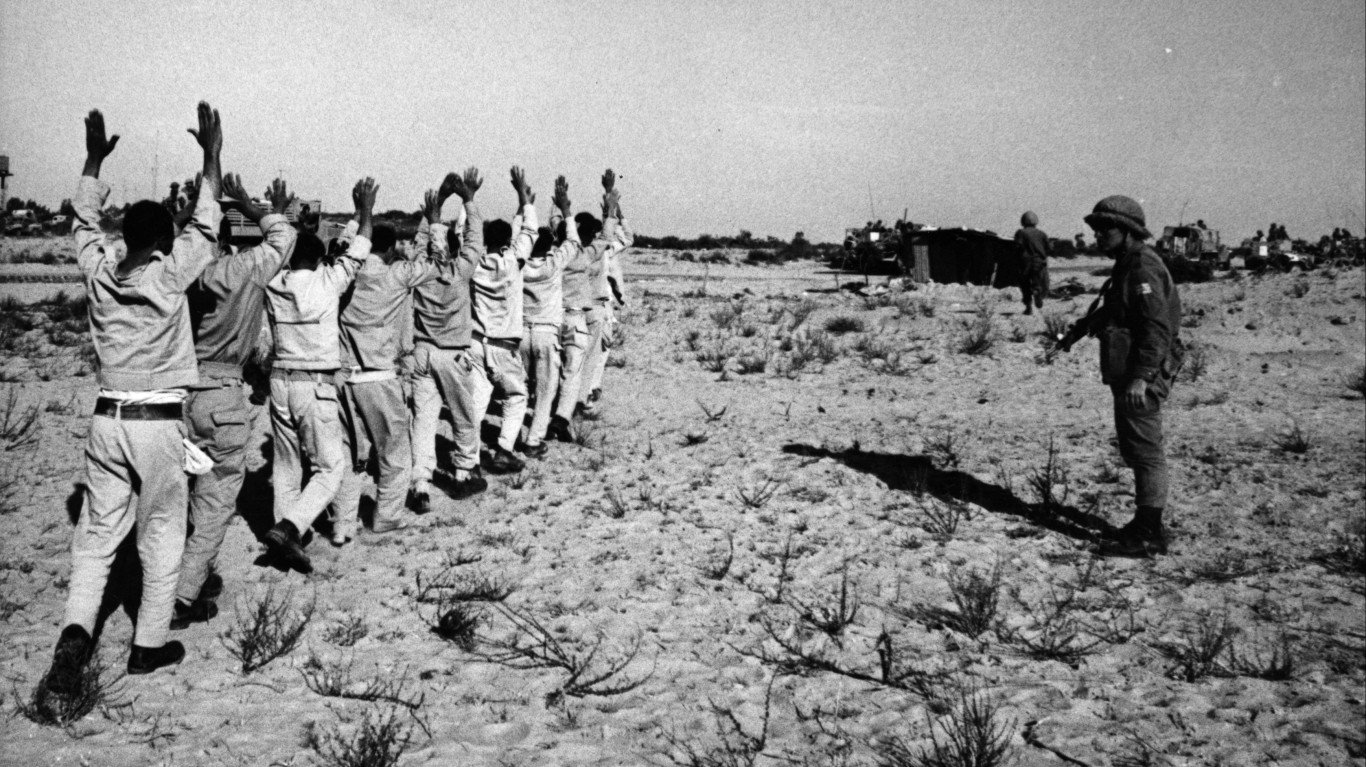
Six Day War
> Year: 1967
> Invading forces: Israel
> Defending forces: Egypt, Syria, Jordan
In the Six-Day War in June 1967, Israel achieved a swift victory against Arab forces. In a surprise pre-emptive strike, Israel decimated over 90% of Egypt’s air force, leaving Egyptians ground troops exposed. Within days, Israel seized key territories, including the Sinai Peninsula, Gaza Strip, West Bank, Jerusalem’s Old City, and the Golan Heights. This fast-paced conflict significantly reshaped the dynamics of the Arab-Israeli dispute.
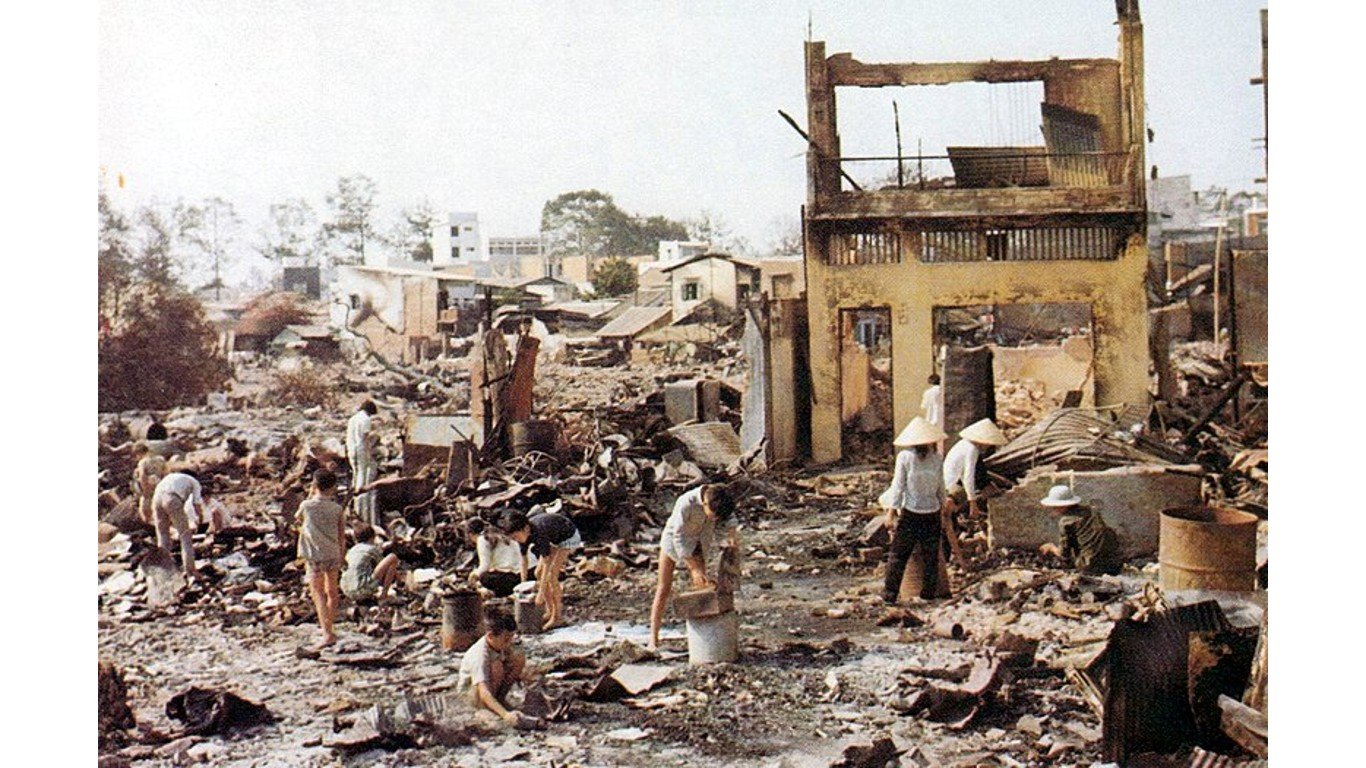
Tet Offensive
> Year: 1968
> Invading forces: North Vietnam, National Liberation Front, Soviet Union
> Defending forces: South Vietnam, United States
The Tet Offensive was a coordinated series of attacks by approximately 85,000 North Vietnamese troops. Launched against five key South Vietnamese cities, various military bases, and numerous towns and villages, it marked a significant military operation during the Vietnamese New Year. Despite being a tactical failure for the North, it had profound psychological effects, particularly within the American political sphere and public sentiment. The American public’s negative reaction to the Tet Offensive ultimately led to the Nixon Administration pulling forces from South Vietnam in 1973.
[in-text-ad]
Soviet-Afghan War
> Year: 1979
> Invading forces: Soviet Union
> Defending forces: Afghanistan
In December 1979, the Soviet Union invaded Afghanistan to support its communist government against anti-communist Muslim guerrillas, known as the mujahideen. The invasion involved 30,000 Soviet troops, who ousted then-President Hafizullah Amin. Despite the Soviet Union’s intent to stabilize its client state, resistance intensified, with the mujahideen rebellion spreading across the country. The conflict persisted until the Soviet withdrawal in February 1989.

Invasion of the Falklands
> Year: 1982
> Invading forces: Argentina
> Defending forces: United Kingdom
In 1982, Argentina’s military junta, led by Lt. General Leopoldo Galtieri, abruptly ended negotiations with Britain and launched an invasion of the Falkland Islands. The regime believed reclaiming the islands would foster national unity amidst critiques of economic blunders and human rights violations. A well-trained invasion force was mobilized. In response, Britain declared a war zone around the Falklands and assembled a naval task force.
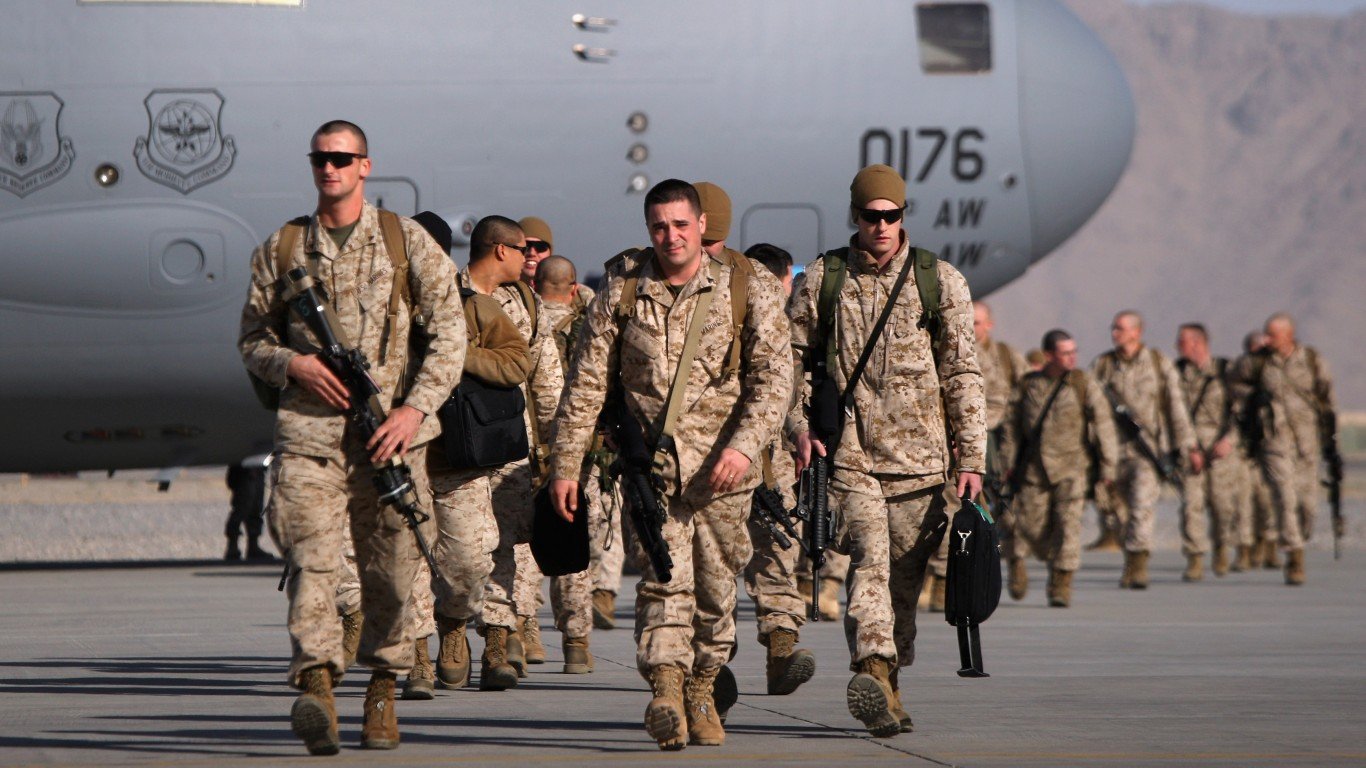
Invasion of Afghanistan
> Year: 2001
> Invading forces: United States, United Kingdom, Canada, Australia
> Defending forces: Afghanistan
In October 2001, in response to the 9/11 terrorist attacks, the U.S., along with British support, launched Operation Enduring Freedom, targeting Taliban forces in Afghanistan. The campaign, primarily involving air strikes, was bolstered by U.S. special forces, the Northern Alliance, which included , and anti-Taliban factions. Ground forces arrived 12 days later, mostly engaging in combat against the Taliban. A significant episode was the Battle of Tora Bora in December, when Afghan militias fought al-Qaeda militants, resulting in bin Laden’s eventual escape.
[in-text-ad-2]
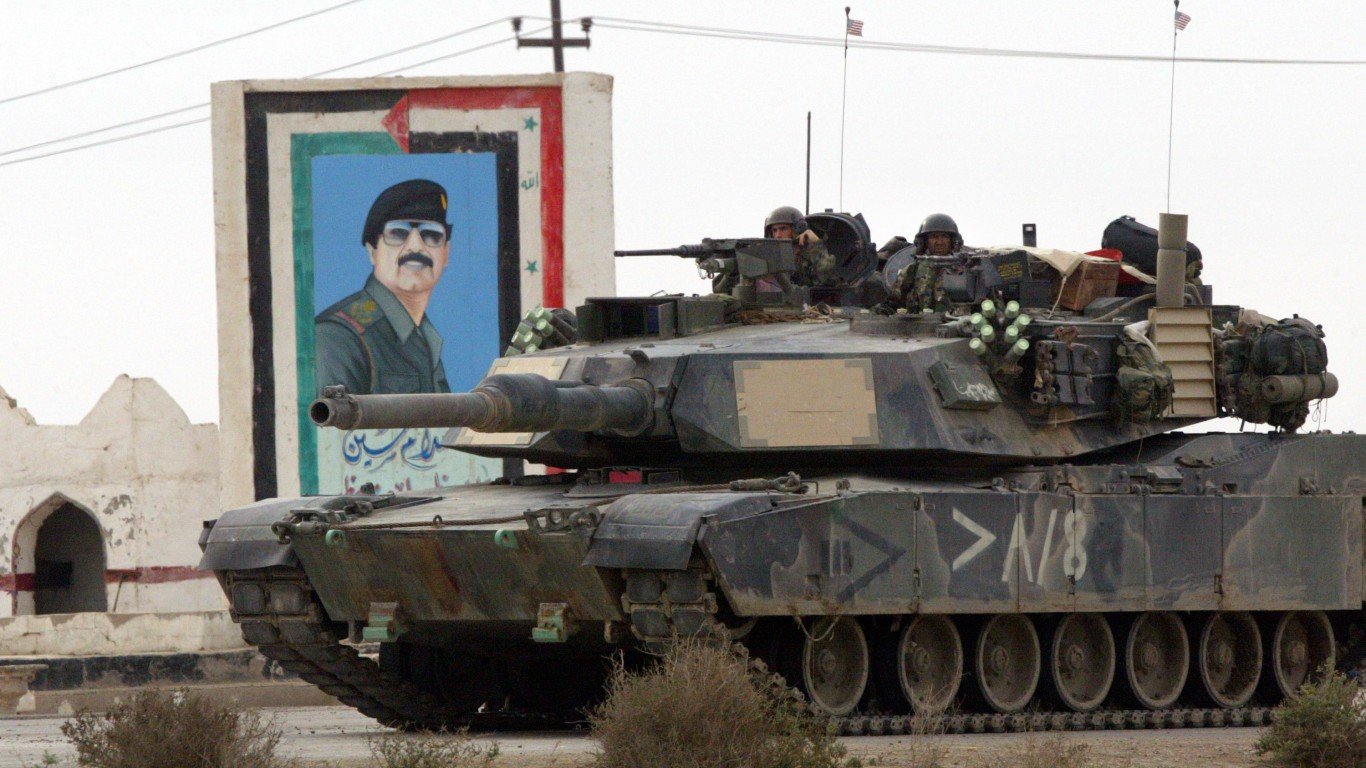
Invasion of Iraq
> Year: 2003
> Invading forces: United States, United Kingdom, Australia, Poland
> Defending forces: Iraq
In March 2003, coalition forces led by the U.S. launched an air and ground invasion of Iraq. The aim was to dismantle supposed weapons of mass destruction and end Saddam Hussein’s regime. The Iraqi Army was swiftly overwhelmed, but resistance continued. Baghdad fell to the coalition within three weeks. Major combat concluded in just over a month, with President George W. Bush announcing the end of major operations in May 2003.
Invasion of Ukraine
> Year: 2022
> Invading forces: Russia
> Defending forces: Ukraine
On Feb. 24, 2022, Russia began a widespread invasion of Ukraine, launching missile strikes on various cities. Swiftly advancing, Russian forces captured vast Ukrainian territories, even reaching the outskirts of Kyiv. Despite taking control of regions in the east and south, including Kherson, and encircling Mariupol, the Russians encountered intense Ukrainian resistance and logistical issues, resulting in shortages of supplies and demoralized troops.
The Easy Way To Retire Early
You can retire early from the lottery, luck, or loving family member who leaves you a fortune.
But for the rest of us, there are dividends. While everyone chases big name dividend kings, they’re missing the real royalty: dividend legends.
It’s a rare class of overlooked income machines that you could buy and hold – forever.
Click here now to see two that could help you retire early, without any luck required.
Thank you for reading! Have some feedback for us?
Contact the 24/7 Wall St. editorial team.
 24/7 Wall St.
24/7 Wall St.